Carbon dioxide (CO2) plays a crucial role in photosynthesis in the ecosystem of a grow tent. When combined with light, it helps plants convert water and CO2 into oxygen and glucose, promoting growth and yield.
CO2 for grow tent application works best under high light intensity and when temperatures are slightly above 75-85°F (25-30°C). It’s ideal for larger, more controlled growing situations where these parameters can be maintained.
Avoid adding extra CO2 for grow tent during the night cycle when plants aren’t photosynthesizing or if temperature and light conditions aren’t optimal. Overuse leads to rapid, unsustainable growth and plant damage.
To add CO2 to your grow tent, you can use CO2 generators, CO2 tanks, fermentation, or decomposition.
Compressed CO2 tanks are easy to control but costly and require regular refills.
CO2 generators use burn propane or natural gas to produce CO2. They are less expensive but increase heat and humidity. Fermentation or decomposition are inexpensive natural methods but make it difficult to control exact CO2 levels.
However, CO2 for grow tents has two main disadvantages: cost and inconvenience. Proper use requires monitoring and control systems, and the initial setup is expensive. The enhanced growth and yield can make it a worthy investment when correctly and at the right time with enough light.
Table of Contents
- What is CO2?
- Why Should I Add CO2 to My Grow Tent?
- How Does CO2 in the Grow Tent Increase Plant Growth?
- When Should You Add CO2 to Your Grow Tent?
- How to Add CO2 to Your Growing Space?
- How Much CO2 is Enough?
- How Do You Calculate the Ideal Amount of CO2 to Be Added to the Grow Tent?
- What Are the Consequences of Having Too Much CO2 in the Grow Tent?
- What is the Cheapest Way to Add CO2 to a Grow Tent?
- What Growing Situation is Not Suitable for Adding CO2?
- Where Should CO2 Monitors Be Placed?
- What Are the Safe Rules When Adding CO2 to Your Growing Space?
What is CO2?
CO2, or carbon dioxide, is a colorless and odorless gas that is vital to life on Earth. This compound consists of one carbon atom and two oxygen atoms. CO2 occurs naturally in the earth’s atmosphere as a trace gas at a concentration of about 0.04 percent (400 parts per million) by volume, as the study conducted by the Ministry of Agriculture, Food and Rural Affairs Ontario states.
CO2 plays a crucial role in plant life through a process called photosynthesis. During the day, plants absorb CO2 from the atmosphere and sunlight to produce glucose, providing energy. This process also releases oxygen, which is essential for animal life.
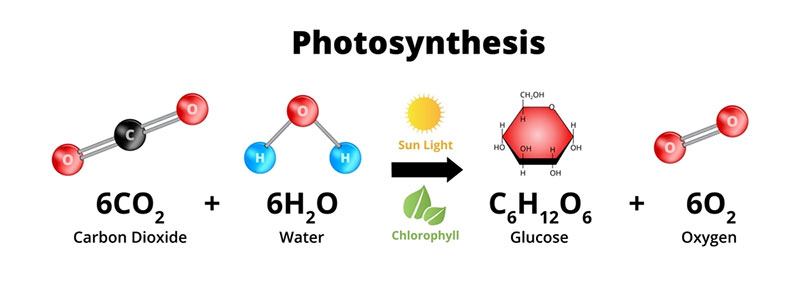
However, at night, when there is no sunlight for photosynthesis, plants switch to a process called respiration, where they consume oxygen and release CO2, just like animals do.
The level of CO2 in nature that plants can absorb is measured in parts per million (PPM). PPM is a measurement unit that denotes a substance’s concentration within another substance. For example, a CO2 concentration of 400 PPM means that out of one million air molecules, 400 are CO2 molecules.
The optimal level of CO2 for plant growth usually falls around 1500 and 2000 PPM. Photosynthesis occurs more rapidly with these higher CO2 levels, leading to faster plant growth.
However, if the CO2 concentration exceeds this range, it has negative effects. Too much CO2 can cause a reduction in photosynthesis in certain plants (rice, cotton, soybeans, orchids) and cease their growth altogether. Also, extremely high levels of CO2 (above 5000 PPM) can be toxic to many types of plants (tomatoes, potatoes, wheat).
On the other hand, if the CO2 level drops below 200 PPM, indoor growing plants will stop growing or die because of CO2 starvation.
Why Should I Add CO2 to My Grow Tent?
You should add CO2 to your grow tent as carbon dioxide provides 7 main benefits to indoor plants. These benefits for plant growth are listed below.
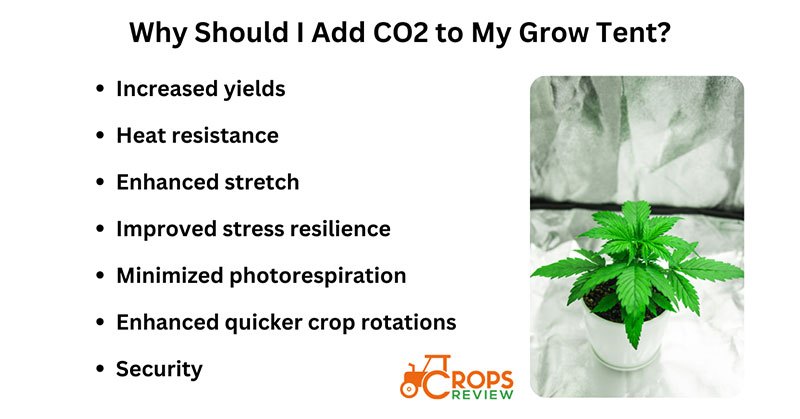
Increased Yields: Elevated levels of CO2 have been found to significantly enhance plant growth and productivity, leading to bigger yields. A report from the CO2 Coalition, titled “Carbon Dioxide Benefits the World: See for Yourself” by the Senate, has shown that 30% of increased CO2 for grow tents supports plant productivity by about 15%.
Heat Resistance: Higher CO2 concentration helps plants become more resistant to high temperatures. Such carbon dioxide levels are beneficial in the face of global warming and climate change, according to research called “Six decades of warming and drought in the world’s top wheat-producing countries offset the benefits of rising CO2 to yield” and published in the Scientific Reports.
Enhanced Stretch: Increased CO2 system leads to faster plant growth, often resulting in plants stretching or growing taller more rapidly. However, this benefit is contingent on other factors, such as adequate light and nutrients, as the article named “Changes in plant C, N, and P ratios under elevated [CO2] and canopy warming in a rice-winter wheat rotation system,” published in the Scientific Reports, explains.
Improved stress resilience: Plants cultivated in an indoor garden with elevated CO2 levels demonstrate increased resistance to environmental stressors, including extreme heat, low moisture, and drought conditions.
Minimized photorespiration: Photorespiration is a phenomenon that impedes the efficacy of photosynthesis in plants. Augmented CO2 concentrations diminish photorespiration, enhancing efficiency, productivity, and output.
Enhanced quicker crop rotations: Using the additional CO2 system lessens the time it takes for crops to grow to a harvestable size, enabling more rapid crop rotations and a boost in total yield.
Security: By maintaining a closed environment with elevated CO2 levels, experienced growers ensure their grow rooms are sealed off from outside interference. Such a grow tent environment is beneficial for security, as it prevents the venting of hot or smelly air that may attract unwanted attention.
How Does CO2 in the Grow Tent Increase Plant Growth?
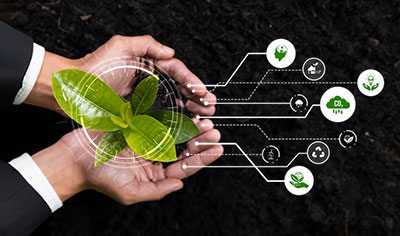
A high concentration of CO2 increases the yield of indoor plants because it enhances the process of photosynthesis.
Cultivating crops under heightened levels of CO2 can boost photosynthesis and lead to improvements in yield, taste, and nutritional value – including an increase in Vitamins C, E, and pro-vitamin A, according to the study conducted by the Department of Horticulture, Zhejiang University in China.
For tomatoes specifically, yields have risen by up to 80% when grown at 1000 ppm CO2, aligning with current commercial greenhouse practices in the tomato production industry. These findings clearly illustrate the potential of increased CO2 levels to enhance yield and quality in greenhouse-grown crops.
However, this doesn’t mean that simply pumping more CO2 into a grow room will always lead to bigger plants. This is where Liebig’s Law of the Minimum comes in.
Liebig’s Law of the Minimum states that growth is dictated not by total resources available but by the scarcest resource (limiting factor). In other words, increasing one nutrient (in this case CO2) will not increase plant growth and yield unless all other nutrients are also available in the necessary amounts. Such nutrients are both micro and macronutrients.
Macronutrients include carbon for the formation of organic compounds, oxygen for the release of energy from sugar, hydrogen necessary for water formation, nitrogen for chlorophyll, amino acids, protein synthesis, phosphorus for photosynthesis and growth, potassium necessary for enzyme activity, sugar, and starch formation, calcium for cell growth and division, the component of a cell wall, magnesium for component of chlorophyll, enzyme activation, sulfur for formation of amino acids and proteins.
Macronutrients include boron for reproduction, chlorine for root growth, copper for enzyme activation, iron for photosynthesis, manganese for chlorophyll and enzyme activation, sodium for water movement, zinc for enzymes and auxins, molybdenum for nitrogen fixation, nickel – for nitrogen liberation, cobalt for nitrogen fixation, silicon for cell wall toughness.
So, while adding CO2 potentially boosts plant growth and yield, it’s crucial to optimize other necessary nutrients and environmental conditions (sunlight, soil moisture, temperature). Otherwise, the extra CO2 will have little to no effect, as the study from Earthwise Organics explains.
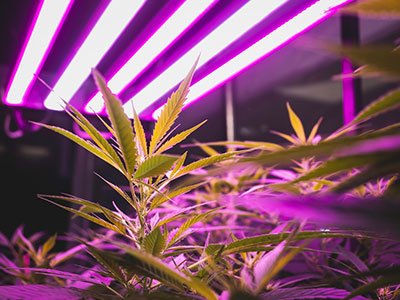
CO2 is closely related to the grow lights as it ensures photosynthesis in a grow tent without any windows. The light and CO2 levels are controlled in an indoor growing environment. When more light is provided, plants absorb and use more CO2 to produce more glucose through photosynthesis. Suppose you increase the intensity of your grow lights. In that case, you might need to increase your CO2 levels to ensure your plants can make the most of the extra light, according to the University of Technology, Qingdao, China.
If you wonder how to choose the grow light for the optimal carbon dioxide levels in your growing area, choose the High Pressure Sodium (HPS) grow light. HPS grow lights are particularly beneficial for plants in a high CO2 environment due to their intensity and spectral output. They emit an intense amount of light covering the full spectrum, including the red and blue wavelengths that plants primarily use for photosynthesis.
The intensity of HPS grow lights allows plants to photosynthesize more efficiently, utilizing the available CO2 to produce glucose for growth and energy. Compared to Red-Blue (RB) and Red-White (RW) LED lights, HPS lighting led to more efficient whole-plant gas exchanges of CO2, contributing to better biomass gain, as the University of Canada states.
Another study conducted by the Natural Resources Institute Finland (Luke) revealed that light production efficiency is better in LED than in HPS. However, the research aimed to test the feasibility of LED lighting alone or combined with HPS lighting for growing cucumbers, suggesting that combining different light sources could provide optimal conditions for plant growth and CO2 utilization.
HPS lights also have a high photon efficacy, meaning they emit many usable light photons per unit of electricity consumed. This characteristic makes them effective in indoor agriculture, where CO2 levels can be controlled. For instance, a chapter in a book on Lighting and CO2 in cannabis production mentions that HPS bulbs are often rated to have a 90% photon efficacy, implying that plants can grow efficiently when the CO2 concentration is optimized and increases yields.
When Should You Add CO2 to Your Grow Tent?
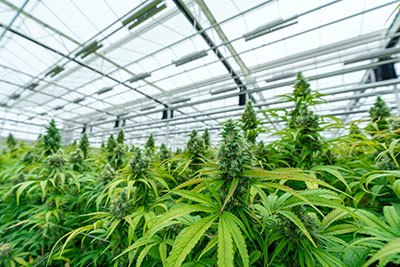
You should add CO2 to your grow tent during the vegetative stage. During the vegetative stage, the indoor plants build their foliage and structure. Carbon dioxide boosts vegetative growth and makes indoor gardening healthier.
You should also add CO2 levels in your grow tents during the flowering stage. The flowering stage is the most responsive for carbon dioxide, and increased CO2 levels lead to larger yields. However, you should stop adding CO2 to your grow tent about 1-2 weeks before the harvest, as too much carbon dioxide affects the taste of the growing plants, as the research conducted by the State Key Laboratory of Soil and Sustainable Agriculture, Institute of Soil Science, Chinese Academy of Sciences, Nanjing, China has shown.
Adding CO2 to your grow tent is also beneficial under specific conditions, including intense lighting, higher temperatures, a sealed environment, and optimal growth conditions.
Since high-intensity lights such as High-Pressure Sodium (HPS) or high-wattage LED lights promote photosynthesis, these grow lights require CO2. If you’re using intense lighting, your plants benefit from additional CO2 as they use the energy to promote green vegetation.
Plants tolerate and even thrive at higher temperatures when CO2 levels are increased. If your grow room runs hot (above 85°F or 29°C), additional CO2 helps your plants perform better.
In a sealed or closed-loop grow space, fresh air isn’t constantly being introduced, so the plants can quickly use up all the available CO2. Adding CO2 in a closed grow space ensures your plants always have enough to photosynthesize effectively.
If all other growth conditions – light, temperature, humidity, nutrients – are dialed in and optimized, then CO2 becomes the limiting factor for growth in grow tents. In this scenario, adding CO2 significantly improves growth and yield, as the MIT Climate Portal explains.
Increasing CO2 in your grow room during the lights-on period is especially important. Plants only absorb CO2 during photosynthesis, which only happens when the grow lights are on. It’s not beneficial to add CO2 during the “lights-off” period because plants respire at this time, releasing CO2 rather than absorbing it.
How to Add CO2 to Your Growing Space?
Adding CO2 to your growing space requires the right equipment to ensure proper use in your grow room.
The most common method of introducing extra CO2 to a grow space, especially for home growers, is a standard tank and regulator kit. Other methods include burning candles, which release CO2 as they burn, or using CO2 bags that contain a fungus that produces CO2 as a byproduct.
If you’re using a tank and regulator, connect the regulator to the tank, then connect your tubing. Set up a timer to control when the CO2 is released. This method can be a bit technical, but you get the instruction manual to help you.
The optimal CO2 level for vegetative growth is between 1,500-2,000 ppm. A CO2 monitor ensures your levels stay within this range. Too much CO2 harms your plants, and too little won’t provide the best results, as the College of Food, Agricultural, and Environmental Sciences explains.
Adjust your setup based on your plants’ response. For example, adding CO2 can make plants more resistant to severe temperatures because it enhances the moisture content. However, too much moisture leads to mold and mildew, so optimize humidity levels (Seedling/early veg: 70-75% Veg: 50-70% Flower: 40-50%).
Adjust your CO2 settings based on the plant’s response to other factors, such as humidity. As you know, increasing CO2 concentration will cause the humidity of the growing environment to increase. Too much humidity will cause mold. Therefore, the CO2 setup should not lead to high humidity exceeding the 70-75% threshold for seedlings and early veg, 50-70% for veg, and 40-50% for flowers.
To maintain high levels of CO2, your grow tent needs to be well sealed. If your tent has vents or other openings, there are ways to manage it, including concrete, silicone, gaskets, and door seals to seal all holes and vents.
Adding CO2 to grow tents might be expensive for many indoor growers, but the DIY options are cheaper. For instance, a basic CO2 setup for aquascapes includes a regulator, tubing, air stone, and a one-way valve, which costs around $100-$130. Additionally, an air tank (often a paintball tank) costs approximately $30-$40. A full setup CO2 system with the drop checker, diffuser, etc., costs around $400-$600.
1. CO2 Tank & Regulator Kits
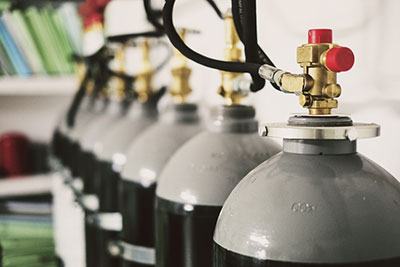
A CO2 tank and regulator kit is a system used to control the release of carbon dioxide into an environment, such as a grow tent or aquarium. These kits typically include a CO2 tank, a pressure regulator, and tubing to guide the gas where it’s needed.
The CO2 tank stores carbon dioxide under high pressure. The regulator is attached to the tank and allows you to control the flow rate of CO2 being released. The gas then flows through the tubing and is dispersed in the desired area.
CO2 tank and regulator kits are ideal for indoor gardening in grow tents, to improve plant growth and yield. Aquariums also commonly use them to promote plant growth and maintain pH levels.
You can precisely control how much CO2 is released, making it easier to maintain optimal CO2 levels. A tank and regulator system are more efficient at delivering CO2, especially in larger areas (6×6 ft, 8×8 ft grow rooms). CO2 tanks store a large amount of gas (6-50 tons), so they don’t need to be refilled often.
These systems can be more expensive upfront than other CO2 supplementation methods (dry ice, CO2 pads, etc.). Setting up and maintaining a tank and regulator system is also more complex than simpler methods, like CO2 bags.
To increase the effectiveness of the CO2 tanks, monitor humidity and temperature in grow rooms, ensure the grow tent is fully sealed to prevent natural gas leakage and use CO2 tanks only during the day, as plants use the energy for photosynthesis only during the day.
To find the best CO2 regulator for your grow tent, look for benefits such as efficiency, promoting and supporting plant growth, and accelerating yields by 20-30%. Such features ensure the optimal indoor growing conditions for your plants.
2. CO2 Generators (Burners)
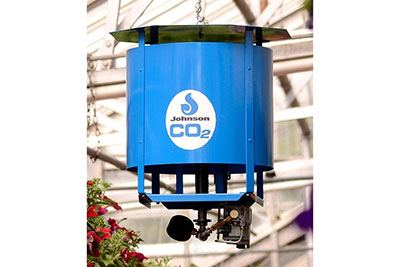
A CO2 generator is a machine that produces carbon dioxide. It is commonly used in greenhouses and grow tents to enhance plant growth, as plants require CO2 for photosynthesis.
A CO2 generator works by burning propane or natural gas in a controlled manner. The combustion process creates CO2, which is then released into the environment. Generators also include a fan to help distribute the CO2 evenly throughout the growing space.
CO2 generators produce a steady supply of CO2, ensuring that your plants always have enough to thrive. Over time, a CO2 generator is more cost-effective than purchasing and replacing CO2 tanks or bags. CO2 generators are suitable for larger grow rooms (6×6, 8×8 ft), as they can produce large amounts of CO2 (50 lbs), releasing about 20 cubic feet of pure CO2 at atmospheric pressure or expanding at a rate of 535:1.
However, burning propane or natural gas produces heat, increasing the temperature of your grow room. CO2 generators are complex to set up and maintain, especially compared to simpler methods like CO2 bags. Improper use of a CO2 generator leads to a build-up of CO2, harming humans and animals, according to the Wisconsin Department of Health Service.
To increase the effectiveness of CO2 regulators in your grow rooms, use a CO2 monitor to ensure that levels remain within the optimal range for your plants. Proper ventilation is crucial to prevent a harmful buildup of CO2 and to keep the temperature under control. Plants only use CO2 during their light phase, so use a timer to run your generator only when your grow lights are on.
To choose the best CO2 burners for grow rooms, look for products that work with liquid propane. This way, you can hang them from the ceiling, and they use built-in electronic ignition for quick operations.
3. Natural CO2 Methods
You can apply 6 natural methods to add CO2 to your grow room without spending too much money. These methods are popular and reliable among most growers.
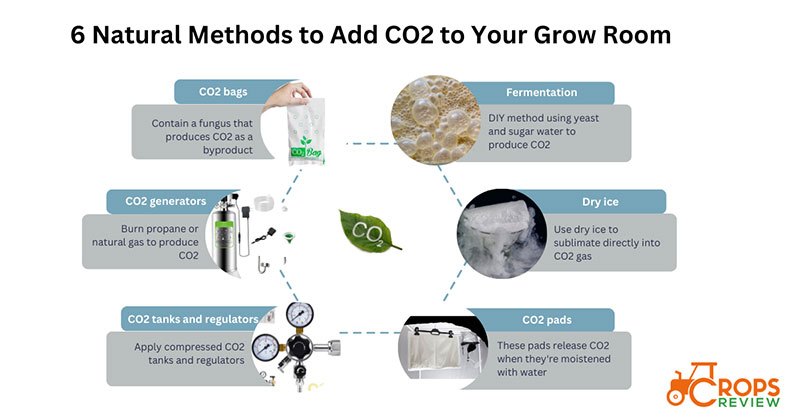
Use CO2 bags. These carbon dioxide bags contain a fungus that produces CO2 as a byproduct. Hang the bag in your grow room. This method is simple and inexpensive but suitable for smaller 2×2 ft grow tents or 4×4 grow tents.
Use CO2 generators. These devices burn propane or natural gas to produce CO2. They are quite effective for larger grow spaces (x6x, x8x8 ft grow tents), but they also produce heat, causing a problem if your grow room is already hot. They’re also more complex to set up and more expensive than CO2 bags.
Apply compressed CO2 tanks and regulators. It’s one of the most common methods of CO2 supplementation. You use a regulator to control the release of CO2 from a compressed CO2 tank. Such a method provides a high level of control over CO2 levels, but it requires knowledge to set up and maintain in your grow room. The initial cost is also high, though the ongoing costs aren’t too pricey if you get cheap CO2 refills.
Use fermentation. Fermentation is a DIY method using yeast and sugar water to produce CO2. It’s quite cheap and easy to set up, but it doesn’t provide much control over CO2 levels, and it may need to produce more CO2 for larger grow tents (6×6 ft or 8×8 ft grow tents).
Use dry ice to sublimate directly into CO2 gas. It’s an easy and inexpensive method of supplementing CO2, but it doesn’t control CO2 levels, and it’s hard to source and handle dry ice safely.
Apply CO2 pads. These pads release CO2 when they’re moistened with water. They’re simple and inexpensive, but like CO2 bags, they are more suitable for small grow rooms (2×2, 3×3, 4×4 grow rooms).
Do You Need to Install CO2 Controllers?
You need to install CO2 controllers in your grow rooms. These controllers constantly monitor the CO2 levels in your environment and adjust them as necessary, ensuring that your plants always have the right amount of CO2 for growth (1000-1200 PPM).
Excessive CO2 is detrimental to both plants and humans. A CO2 controller helps prevent dangerously high levels of CO2 exposure (10,000 ppm for plants, 40,000 for humans and animals), as both the Province of Manitoba Agriculture and the FSIS Environmental Safety and Health Group (ESHG) agree.
CO2 controllers are worth it because they greatly improve the efficiency and effectiveness of your CO2 supplementation. By keeping CO2 levels within the ideal range, they ensure your plants are healthier, grow faster, and yield more. They also help prevent CO2 waste and contribute to a safer grow room environment.
The controller keeps CO2 devices on the same schedule as grow lights. If CO2 is added at night or when the grow light is off, it is completely wasted, as plants only use CO2 during their light phase.
Advanced CO2 controllers, such as Inkbird, also manage ventilation in the grow room, improving the overall growing conditions.
How Much CO2 is Enough?
The standard amount of CO2 for vegetative stages is between 800 and 1200 ppm. Elevated CO2 concentrations stimulate the growth of the vegetative structures. For the flowering stage, the optimal CO2 amount is 1200-1500 ppm.
For rapid growth, the optimal level can be up to five times higher than the standard atmospheric concentration, or about 1,500 to 2,500 ppm, as Stanford University explains.
While plants generally respond positively to increased CO2 up to about 1,500 to 2,500 ppm, going beyond this could be wasteful and potentially harmful. Concentrations exceeding 1,800 ppm cause plant damage and decay in growth, according to Oklahoma State University.
How Do You Calculate the Ideal Amount of CO2 to Be Added to the Grow Tent?
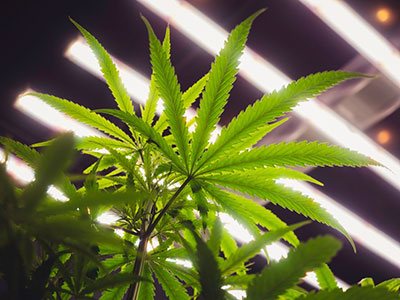
To determine the quantity of CO2 required, you should first calculate the volume of your grow room. For instance, if your growing area measures 8x8x7 feet, it encompasses 448 cubic feet (since 8x8x7 equals 448). The formula to calculate the necessary CO2 to reach a level of 1,000ppm is as follows:
Multiply the room’s width, length, and height by the desired CO2 level in parts per million.
In this case, the calculation would be 8x8x7x0.001, which equals 0.448 cubic feet of CO2. This is the amount required to increase the CO2 concentration in the grow room to 1,000 ppm.
To estimate how long the regulator will be active, use this equation:
Divide the needed CO2 (in cu.ft.) by the flow rate per minute.
Given that 0.448 cu.ft of CO2 is needed, and the regulator is set to a flow rate of 0.08 cu.ft. per minute, the CO2 controller would need to trigger the solenoid on the regulator for roughly 5.6 minutes to elevate the CO2 concentration to 1,000ppm (since 0.448 divided by 0.08 equals 5.6).
What Are the Consequences of Having Too Much CO2 in the Grow Tent?
The consequences of too much CO2 in the grow tent include health risks for humans, adverse plant effects, increased humidity, and disrupted plant growth.
High levels of CO2 lead to health issues such as dizziness, headaches, increased heart rate, rapid breathing, and even visual and hearing impairments. In extreme cases, it’s lethal to humans when CO2 levels surpass dangerous levels of 5,000 ppm.
While plants generally benefit from CO2, excessive levels lead to vigorous growth, causing tissue deterioration in cannabis plants.
An oversupply of CO2 raises the humidity in your grow tent, increasing the risk of fungus and rot. If CO2 levels are not properly managed, they fluctuate wildly, disrupting plant growth.
How to Use CO2 to Harm Plants?
You can use CO2 to harm plants with overexposure. If a plant is exposed to levels of CO2 that are too high (above 1500 ppm), it causes the plant to grow too quickly, leading to weak and unhealthy plants.
Applying CO2 when lights are off is not beneficial because plants only use CO2 during photosynthesis. Such a phenomenon leads to an excess of CO2, harming the plants.
A lack of ventilation also causes CO2 to accumulate to harmful levels. High concentrations of CO2 can suffocate the plant, inhibiting its ability to absorb oxygen.
What is the Cheapest Way to Add CO2 to a Grow Tent?
The cheapest way to add CO2 to your grow tent is to hang exhale CO2 bags. There’s no need for installation – just suspend it above your plants, taking advantage of the fact that CO2 is denser than air. The bag steadily emits CO2 around the clock for approximately six months.
What Growing Situation is Not Suitable for Adding CO2?
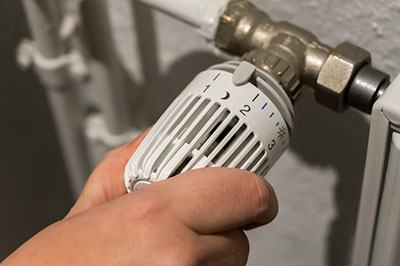
The growing situation that is not usable to add CO2 includes an unsealed grow room, low temperature, incorrect grow light, and limited budget.
If your growing space isn’t set up as a “closed loop” (a sealed environment with fully controlled climate conditions), adding supplemental CO2 is ineffective. In an “open loop” system, where an inline fan is constantly running, any added CO2 is extracted before it positively impacts plant growth.
If your room’s temperature is too low, adding CO2 isn’t beneficial. Plants use CO2 more efficiently at higher temperatures, so focusing on increasing the room’s temperature might be more worthwhile.
If your grow light isn’t powerful enough, the plants won’t be able to utilize the extra CO2 effectively. Photosynthesis requires light, and without sufficient light intensity, the additional CO2 won’t boost plant growth as expected.
Setting up a CO2 enhancement system is costly, involving the CO2 source, regulators, monitors, and possibly even changes to your ventilation system. If you’re working within a tight budget, the expense of a CO2 setup outweighs the potential benefits to your plants’ growth. Investing in other aspects of your grow room, like better lighting or temperature control, could be more cost-effective.
Where Should CO2 Monitors Be Placed?
Place the CO2 monitors 4-6 feet off the ground. A CO2 leak in a confined space can rapidly become a severe hazard. The area 4-6 feet off the ground is known as the breathing zone. The “breathing zone” is the region where most human respiration takes place, making it an ideal spot for CO2 detectors, as many gases spread in this area.
Given that CO2 comprises one carbon atom and two hydrogen atoms, its molecular weight of 44 g/mol makes it denser than oxygen; hence CO2 is heavier than air, so it should be in the breathing zone for humans.
What Are the Safe Rules When Adding CO2 to Your Growing Space?
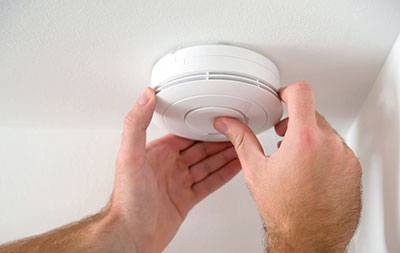
It’s important to do so safely since CO2 is a colorless and odorless gas that is harmful in high concentrations.
Since CO2 is undetectable by human senses, using a CO2 monitor or alarm is vital. This device will alert you if the CO2 levels in your grow room become dangerously high (5,000 ppm).
Ensure your grow room is well-ventilated. While you want to maintain higher CO2 levels for the benefit of your plants, you need to ensure that these levels are safe for humans. Regular ventilation helps in maintaining this balance.
Aim to keep CO2 levels in your grow room below 1500 ppm. Above this level, CO2 is harmful to your plants. And for human safety, concentrations should definitely not exceed 5000 ppm.
If you’re using a CO2 generator or tank, ensure it’s installed correctly and securely to prevent leaks.
Always leave the area immediately if you start to feel dizzy, short of breath, or have headaches when you’re in your grow room. These are the signs of CO2 poisoning.
